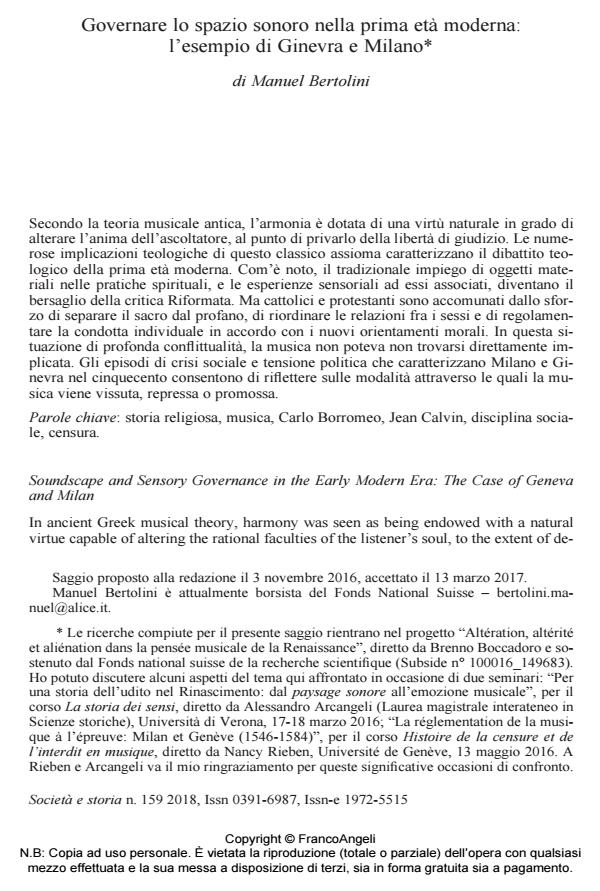Soundscape and Sensory Governance in the Early Modern Era: The Case of Geneva and Milan.
Journal title SOCIETÀ E STORIA
Author/s Manuel Bertolini
Publishing Year 2018 Issue 2018/159
Language Italian Pages 18 P. 35-52 File size 68 KB
DOI 10.3280/SS2018-159002
DOI is like a bar code for intellectual property: to have more infomation
click here
Below, you can see the article first page
If you want to buy this article in PDF format, you can do it, following the instructions to buy download credits

FrancoAngeli is member of Publishers International Linking Association, Inc (PILA), a not-for-profit association which run the CrossRef service enabling links to and from online scholarly content.
In ancient Greek musical theory, harmony was seen as being endowed with a natural virtue capable of altering the rational faculties of the listener’s soul, to the extent of depriving that person of his freedom. The many theological implications of this classical axiom featured in early modern theological debates. In fact, the traditional uses of material objects in the liturgical and spiritual practices, and the sensory experiences associated with them, are at the heart of the Reformation discourse. Reformers and traditionalists are affected to some extent by efforts to separate the sacred and the profane, to reorder gender relations, and to discipline human conduct according to new moral standards. It was impossible for music not to be implicated in the Reformation conflict and its consequences. Instances of crisis, conflict, and change in Milan and Geneva may provide ideal opportunities to explore the ways in which music was experienced, repressed or promoted.
Keywords: Religious history, Music, Carlo Borromeo, Jean Calvin, Social control, Censorship.
Manuel Bertolini, Governare lo spazio sonoro nella prima età moderna: l’esempio di Ginevra e Milano in "SOCIETÀ E STORIA " 159/2018, pp 35-52, DOI: 10.3280/SS2018-159002